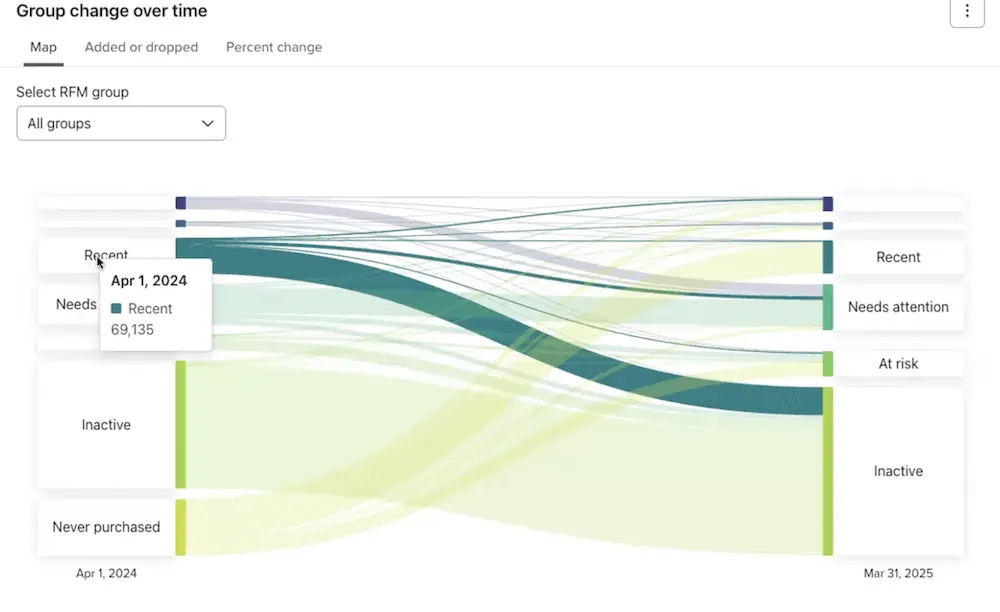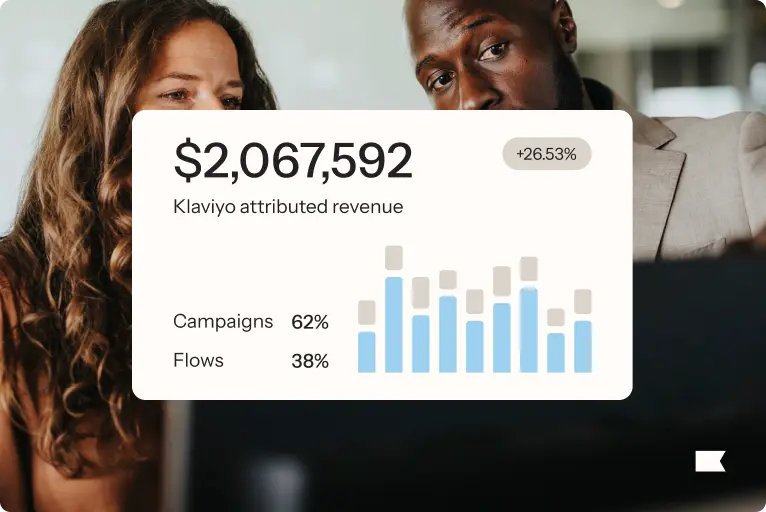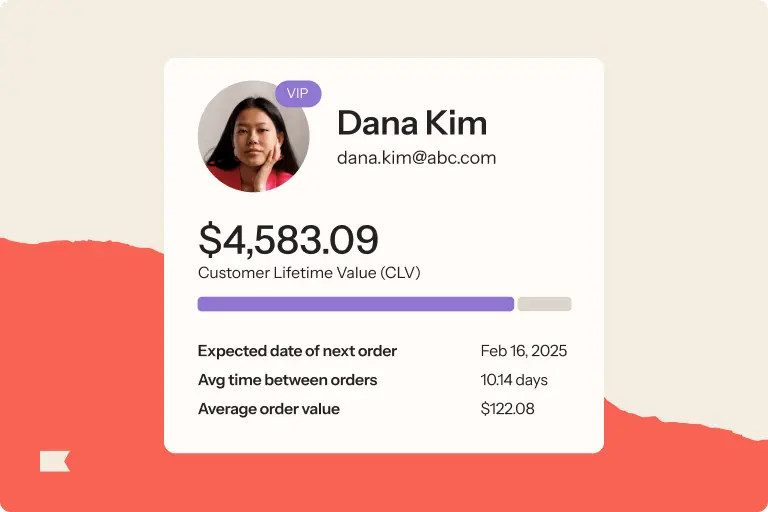3 ways to use Klaviyo’s full capabilities to weather economic volatility

DISCLAIMER: The information contained in this blog post is intended for general informational purposes only and does not constitute legal, financial, or professional advice. Please seek appropriate professional counsel before making any decisions based on the information provided.
In today’s economic landscape, marketers face declining return on ad spend, rising customer acquisition costs, and potential tariffs threatening profit margins.
What if your next 7-figure opportunity is already sitting in your Klaviyo account, waiting to be unlocked?
Most businesses use Klaviyo as merely an email platform while thousands of customers quietly fade away. This isn’t just about churn—it’s customer lifetime value decay silently stunting your growth potential.
As founder of A-Game Digital, I’ve helped premium and heritage brands turn Klaviyo into a retention profit engine. At the heart of our strategy is a diagnostic that pinpoints the exact segments, behaviors, and missed opportunities silently dragging down your customer lifetime value.
The output is a visual, data-backed plan that reveals where profit is slipping away, and where your next revenue breakthrough is hiding.
Your customer base is constantly moving—upgrading, downgrading, or disappearing. Without tracking customer movement across recency, frequency, and monetary value (RFM) segments, you’re flying without a compass.
When you use Klaviyo Data Platform alongside Marketing Analytics, it can reveal hidden opportunities and guide your retention strategy during economic uncertainty. The Revenue Migration Model™ turns this data into actionable insights that deliver measurable results—like the client who captured $186,000 in sales from dormant customers in just 25 days.
At A-Game, I remind the brands we work with: Klaviyo is a Ferrari. Don’t drive it like a Honda.
Let me show you 3 tactics to leverage Klaviyo’s full potential and protect your profits, regardless of economic conditions.
Step 1: Take stock using RFM
The smartest brands use Klaviyo’s RFM data to track customer movement as closely as Wall Street traders track stock flow.
Under the “Customer insights” tab, look at your last year. You’ll see your different segment counts over that time period. Maybe your “Champion” and “Loyal” cohorts have grown, but so have your “Needs attention” and “At risk” cohorts. And, chances are, your “Inactive” segment has grown quite a bit.

This wouldn’t be a unique situation for any brand during a period of economic uncertainty—the folks who really love you and aren’t as affected by economic tumult keep on buying, but those who don’t know you as well and are affected are tightening their purse strings.
Step 2: Mitigate downward movement—without busting your budget
One of the most helpful aspects of Klaviyo’s Marketing Analytics is that it shows you how groups change over time.
What group did someone begin in a year ago? What group are they in now?
If you’re going to run paid ads or even just minor discounts during economic uncertainty, you want to make sure you’re targeting the right people—those who need attention and are at risk. Champions and loyal customers will often buy with a simple message that reinforces their affinity for your brand. They’re also the first to buy new products at full price and purchase again when looking for a gift that’s sure to spark joy.
Instead of simply applying discounts and ads to a 90-day engaged segment, focus on recently acquired customers who have slipped into the “Needs attention” segment. Now is the time to reach out to them before they downgrade to “At risk” or “Inactive.” You spent a fair amount of money acquiring them in the first place—focusing paid ads and targeted discounts on them is a worthwhile investment.

To promote upward movement isn’t impossible during times like these, either. At A-Game, we use the median performance data inside Marketing Analytics to reverse-engineer the purchase frequency, order count, and monetary value of the “Champions” segment.
From there, we design post-purchase flows and targeted offers that mirror those benchmarks. For example, if champions typically place two orders within 90 days with an AOV of $125, we’ll build a flow that uses predictive product recommendations, incentives, and time-based nudges to engineer that exact behavior from high-potential customers.
It’s not guesswork—it’s a math-driven lifecycle strategy.
Once you zero in on your retention strategy, your burn rate gets much lower. It also makes you less dependent on the “Never purchased” cohort.
A-Game’s unique Revenue Migration Model™ shows you:
- Where your retention revenue is leaking right now—with exact counts of customers silently downgrading or defecting
- Which customer segments represent your highest upside—so you can focus your time, budget, and messaging where it matters most
- The financial impact of inaction—in projected lost revenue, decayed CLV, and missed recovery and growth opportunities
Getting a deep and accurate understanding of these nuances is how retention becomes your growth engine. It’s important all the time, but especially during economically uncertain times.
Discover the biggest opportunities, and let them dictate your strategy.
Step 3: Get your deliverability in order
Once you start putting together your campaign strategy according to your RFM segments, you get really good deliverability as a side effect. Because you’re sending to so many champions and other regular customers, your emails are opened and engaged with (at a faster rate). This signals to the inbox providers that you are trustworthy.
You’ll end up recovering quite a few inactive people simply because your emails are landing in their inbox instead of spam. With one brand, we made more money off the “Inactive” segment (whose median last purchase was nearly 3 years prior) than we did from the “Champions.”

The moral of the story is not necessarily to suppress or ignore your “Inactive” segment. There are ways you can keep marketing to them that can be very successful and effective.
Remember: inactive doesn’t mean unreachable.
Remember: inactive doesn’t mean unreachable. With the right omnichannel strategy, we’ve helped brands recover 6–7 figures in “found money” from segments they thought were dead.
In fact, we haven’t come across a scenario yet where we haven’t been able to dramatically increase the number of people we can reactivate. Let’s say you have a campaign that’s content-only. You can use dynamic blocks to include a discount only to your “Inactive” segment.
Deliverability pro tip: Because automated flows are triggered by subscriber behavior, and not mass sent at the same time, these help your deliverability, too.
If Klaviyo is a Ferrari, this is your pit crew
I’ve said it over and over, and I’ll say it again: Klaviyo is a Ferrari. Most businesses drive it like a used Honda.
Marketing Analytics is the dashboard that unlocks the full-throttle performance you’ve been missing.
And the Revenue Migration Model™ is your pit crew’s secret weapon—once it reveals the cracks in your retention strategy, you can’t unsee it.
- Those customers you worked hard to convert during BFCM? See precisely when they’re most likely to churn if you do nothing to stop it.
- The customers you thought were VIPs? What if you knew exactly who your best customers are and how to attract more of them?
- Still testing new offers in the dark? Stop batch-blasting discounts—and start deploying dynamic content and incentives tuned to each segment.
RFM gives you clarity. Revenue Migration Modeling™ gives you the plan. All other metrics are just vanity.
See what’s hiding in your customer data
Activate your free trial of Marketing Analytics, and A Game will build your custom strategy with our proprietary tools, free of charge.
This is the same method used by lifecycle teams at premium and heritage brands to uncover hidden revenue, preserve margin, and scale loyalty.
Here’s what you’ll get delivered within 24 hours:
- Revenue leak exposure: See exactly where your revenue is bleeding post-purchase—with hard counts of customers silently downgrading, defecting, or disappearing.
- Your retention pay zones: Pinpoint the overlooked customer segments sitting on outsized revenue potential—so you can double down on the exact actions that generate profit and growth.
- Lifecycle profit plan: Get a strategic roadmap designed to increase purchase frequency, extend CLV, and make retention your most reliable growth engine.
You can execute your lifecycle profit plan with your internal team, collaborate with us in a done-with-you format, or hand it off entirely for done-for-you implementation.
Either way, you stay in control—with a system designed to work across teams, roles, and partners.

Related content

Achieve more in 3 months with Klaviyo Marketing Analytics. This calendar gives you the structure and documentation you need to level up.

Discover 6 data-driven ways to use Klaviyo Marketing Analytics to boost BFCM performance, personalize campaigns, and drive long-term customer retention.

Use this quick customer lifetime value formula to understand your business health and customer experience.